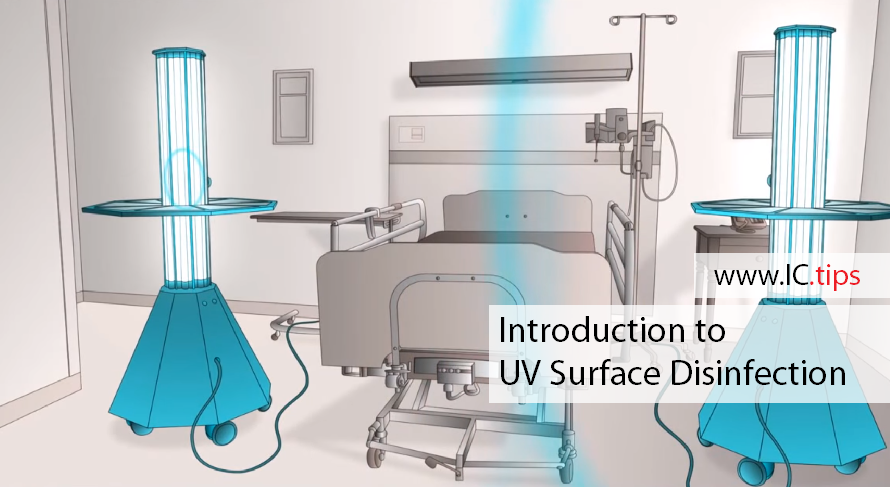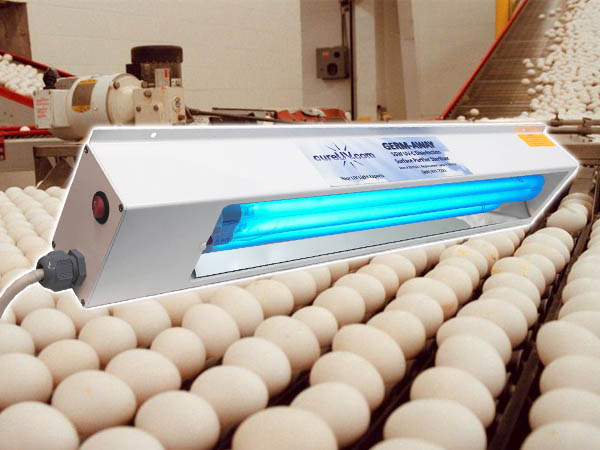Revealing the Benefits of UV Disinfection: Making Certain Clean and Disinfected Spaces
While typical cleansing methods have actually long been depended upon, innovations in innovation have presented an innovative remedy that makes certain clean and sanitized areas: UV disinfection. In addition, we will delve right into the safety factors to consider that should be taken right into account when carrying out UV disinfection. Prepare to discover a new dimension of sanitation and find the untapped potential of UV sanitation.

The Science Behind UV Sanitation
UV disinfection is a medically proven approach that makes use of ultraviolet light to get rid of harmful microbes from surfaces and water. The science behind UV sanitation depends on the capacity of UV-C light to damage the DNA and RNA of bacteria, providing them not able to reproduce and triggering their eventual death. UV-C light drops within the wavelength series of 200 to 280 nanometers, which is extremely reliable in ruining microorganisms, viruses, and various other microorganisms.
When revealed to UV-C light, the genetic product of microorganisms takes in the power from the light, leading to the formation of thymine dimers. These dimers disrupt the typical duplication and transcription procedures of the microorganisms, hindering their ability to survive and replicate (uv surface disinfection). The DNA and RNA damages created by UV-C light is deadly to the bacteria, making UV disinfection a trustworthy and reliable technique for eliminating a vast array of microorganisms
UV disinfection is especially useful in atmospheres where traditional chemical disinfectants may be impractical or inadequate. It is a non-chemical technique that does not leave any type of residues or dangerous by-products, making it secure for usage in food handling, health care centers, water treatment plants, and various other markets. Moreover, UV disinfection is eco-friendly, as it does not add to the development of antibiotic-resistant bacteria or various other harmful toxins.
Effectiveness of UV Disinfection on Pathogens
The performance of UV sanitation in removing virus has been thoroughly studied and verified in numerous clinical researches. UV radiation has the ability to suspend a broad variety of microbes, including fungi, germs, and infections, by harming their DNA or RNA. This stops them from reproducing and creating infections.
One study published in the American Journal of Infection Control discovered that UV disinfection was effective in lowering the existence of numerous drug-resistant bacteria in healthcare facility areas. An additional study carried out by the National Institute for Occupational Security and Health and wellness showed that UV disinfection had the ability to remove 99.9% of the influenza infection on surfaces.
UV disinfection has actually also shown assurance in combating the spread of healthcare-associated infections (HAIs) According to a research published in The Lancet, making use of UV-C light along with basic cleaning procedures considerably reduced the occurrence of HAIs in a health center setup.
Furthermore, UV sanitation has actually proven to be reliable versus emerging microorganisms, such as the severe intense respiratory system disorder coronavirus 2 (SARS-CoV-2), which triggers COVID-19. A research performed by the National Arising Contagious Illness Laboratories demonstrated that UV-C light can inactivate the infection on surface areas within secs.
Applications of UV Disinfection in Various Setups
With its tried and tested efficiency in removing microorganisms, UV disinfection has located applications in a range of setups. One of the most typical locations where UV sanitation is used remains in medical care centers. UV innovation is made use of to sanitize patient areas, operating rooms, and other high-touch surface areas, decreasing the risk of healthcare-associated infections. Additionally, UV disinfection see this is additionally being applied in food handling plants and dining establishments to make sure the security of food and prevent the spread of foodborne diseases. UV sanitation is additionally beneficial in water treatment plants, where it is used to eliminate dangerous bacteria and supply risk-free drinking water.
One more important application of UV disinfection impends filtration market. UV air cleansers are used in household, commercial, and commercial setups to eliminate air-borne microorganisms, viruses, and mold and mildew spores. This technology is especially beneficial in settings where people are a lot more susceptible to breathing infections, such as hospitals, colleges, and office buildings.
In addition, UV disinfection is increasingly being utilized in public transportation systems, such as trains and buses, to keep tidy and sanitized spaces for travelers. UV light is used to disinfect surfaces and air inside the cars, minimizing the threat of spreading out infectious illness.
Benefits of UV Sanitation Over Standard Approaches
In contrast to typical approaches, UV sanitation uses a series of distinct benefits that make it a preferable choice in various sectors and setups. One substantial advantage is its effectiveness versus a vast variety of bacteria, including fungi, viruses, and microorganisms. Unlike chemical disinfectants that might have restricted effectiveness against specific microorganisms, UV disinfection is a non-selective process that can eliminate or inactivate a broad spectrum of unsafe organisms.
One more benefit of UV disinfection is its capacity to supply reliable and fast disinfection. Traditional sanitation techniques frequently call for longer get in touch with times or multiple actions to accomplish the wanted level of sanitation. On the other hand, UV light can offer continuous and prompt disinfection, lowering downtime and enhancing productivity in various applications.
UV disinfection additionally offers a safe and ecologically friendly option to traditional sanitation methods. uv surface disinfection. Unlike chemical agents, UV light does not leave any harmful residues or spin-offs, making it appropriate for usage in delicate environments such as food handling facilities, health care settings, and water treatment plants
In addition, UV disinfection is a cost-efficient remedy over time. While the ahead of time investment for UV disinfection systems may be greater than typical methods, the operational expenses are typically lower. UV lamps have a long life-span and require minimal maintenance, leading to minimized labor and substitute expenses.
Safety Considerations for UV Disinfection
Thinking about the prospective risks connected with UV disinfection, it is necessary to deal with the security considerations entailed in implementing this modern technology. UV sanitation makes use of ultraviolet light to eliminate or inactivate bacteria, making it an efficient approach for sterilizing numerous surfaces and items. Nevertheless, it is very important to recognize that UV radiation can additionally present dangers to human health and wellness if proper precaution are not followed.
Primarily, straight exposure to UV radiation can trigger damage to the skin and eyes. Prolonged direct exposure can cause sunburn, skin damage, and also a boosted risk of creating skin cancer cells. It is essential visite site to ensure that UV disinfection systems are correctly enclosed and geared up with safety and security attributes such as automatic shut-off mechanisms or movement sensing units to avoid unintended exposure.

Additionally, proper training and education are vital for those accountable for running UV sanitation systems. They ought to know the prospective threats, comprehend the safety methods, and understand how to take care of and preserve the equipment appropriately.
Final Thought
In conclusion, UV disinfection supplies many advantages in guaranteeing clean and sanitized rooms. Its efficiency in eliminating virus has actually been shown via scientific study. UV disinfection can be used in different setups, including health care centers, food processing plants, and water treatment systems. Contrasted to conventional approaches, UV disinfection has advantages such as faster sanitation times, marginal chemical usage, and no hazardous by-products. Safety and security considerations have to be considered to stop potential dangers related to UV exposure.
UV disinfection is a clinically tried and tested approach that utilizes ultraviolet light to eliminate damaging bacteria from surface areas and water. The DNA and RNA damages triggered by UV-C light is deadly to the bacteria, making UV disinfection a efficient and reliable method for killing a wide range of virus.
Another advantage of UV disinfection is its capability to offer efficient and quick disinfection. UV disinfection utilizes ultraviolet light to eliminate or inactivate microbes, making it an efficient method for sterilizing different surface areas and items. Compared to traditional techniques, UV disinfection has benefits such as faster disinfection times, very little chemical use, and no hazardous results.